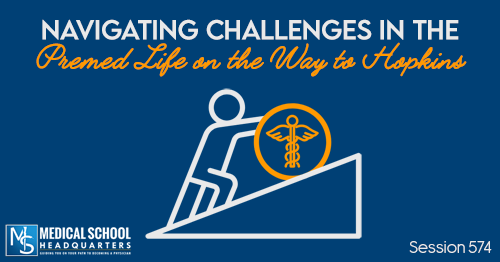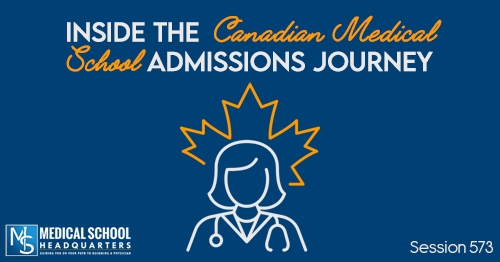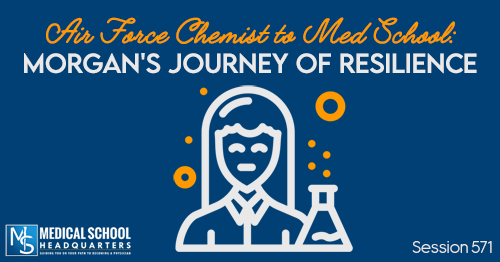The costs associated with the premed process can be overwhelming and can discourage some students from pursuing medicine. While we can’t change many of the costs you will face, we do what we can to democratize the process by providing free information and advice, as well as highlighting ways that students can reduce any costs. One way that students can greatly reduce the costs associated with applying to medical school is by applying for the AAMC’s Fee Assistance Program. You can also use our application expenses calculator to get a better idea of the full costs of applying to medical school.
Who Can Benefit from the Fee Assistance Program?
The AAMC publishes guidelines on who qualifies for their fee assistance program, and we’ll get into those guidelines shortly. First, though, I want to say that it’s worth applying if you think you might qualify or could benefit from the program. The application is free to fill out and is relatively easy for most applicants. If you’re unsure, let them be the ones to tell you no, instead of never giving yourself a chance. It’s the same thing we say about applying to schools that feel like a “reach”: let them be the ones to tell you no.
Previously, FAP required that beneficiaries be US citizens, permanent residents, or DACA recipients. Luckily, now all that is required is for students to have a permanent US address. This is great news for any immigrant students or international students currently living in the US. There were also relatively recent changes to which students must submit their parents’ information when applying for fee assistance. Previously, the age at which your parents’ information wasn’t required was 30, and the age has now been lowered to 26. This opens up funding options for nontraditional students whose parents’ income is not supplementing theirs. Hopefully, these options will open up even further in years to come.
In order to qualify, each household listed on your application (i.e., your household and your parents’ household) must have an income level equal to 400% of the current national poverty guidelines. You can view these amounts for the contiguous US, Alaska, and Hawaii on the AAMC’s website.
What Does the Fee Assistance Program Give Students?
FAP recipients receive free access to the Medical School Admissions Requirements (MSAR) database for two years, which students can use to understand prerequisites and build a school list. They also receive free access to the Online-Only MCAT Prep Materials bundle, valued at $268.80, and reduced cost of MCAT registration, from $330 to $135. You can also apply to up to 20 AMCAS-participating schools for free. Many schools will also waive secondary fees for FAP recipients, and this information is generally available on their website and/or MSAR.
When Should I Apply for Fee Assistance?
Your benefits expire at the end of the calendar year in which your application was approved. So, if you receive fee assistance in May of 2023, those benefits will expire on December 31, 2023. Benefits are also not retroactive. Meaning if you register for the MCAT before receiving benefits, you won’t get the difference in cost back once approved. You might need to do some planning to make sure that you maximize your use of these benefits.
Luckily, you can benefit from FAP multiple times. However, you can only apply once per calendar year and may only benefit five times in your lifetime. It may be most beneficial to ensure that you apply for FAP, register for the MCAT, and apply to medical school all in the same calendar year if possible. At the end of the day, you should do what’s best for your unique situation, even if that means spreading these out over two calendar years.
You can get the answers to more of your questions about the Fee Assistance Program answered here.
What About AACOMAS?
The benefits of AACOMAS’s fee assistance and the timing of when to apply to it differ from the AAMC program, so it’s useful to keep that in mind. Mark separate dates on your calendar for when to apply for each so you can get the most out of both opportunities if applying to both DO and AMCAS schools.
AACOMAS offers a limited number of fee waivers, so you don’t want to wait until the last minute to apply for one. The waiver also lasts for a limited amount of time, so you want to already have your medical school application ready when you apply for the waiver or get it ready shortly after. These benefits are also not retroactive, so your timing should be to apply for fee assistance and then submit your AACOMAS application shortly after being approved.
AACOMAS’ fee assistance program awards a waiver for the $198 cost of applying to the first school, but applicants are still responsible for the $50 per subsequent school. Checking individual schools’ websites or chooseDO will be your best resource for finding out which schools will waive your secondary fee. If you can’t find this information, it’s worth reaching out to the school and asking.
What About TMDSAS?
TMDSAS does not offer a fee waiver, but for a good reason. They charge one flat fee that allows you to apply to as many schools as you would like. Many schools will also waive secondary fees for students who qualify for fee assistance from other application services. Check individual schools’ websites for their policies on this.
More Links and Resources
Guide to Applying to Medical School on a Budget
Prepping for the MCAT on a Budget







